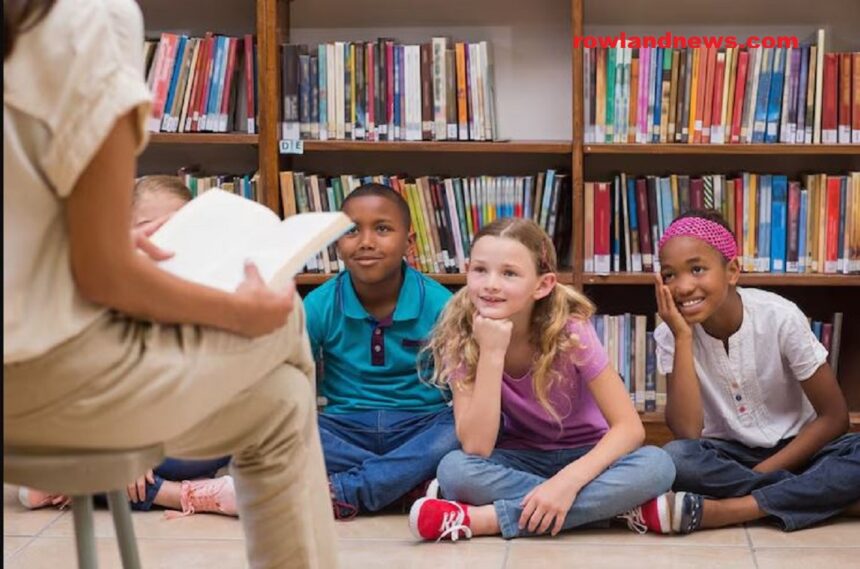Consider stepping into a classroom, not just to learn, but to prepare for guiding young children on their educational adventures. That’s exactly what early childhood education in high school is all about. It’s not your run-of-the-mill course. It’s a hands-on, eyes-to-the-horizon kind of program that gives students a head start in upgrading their future. In view of the world’s recognition of the lifelong importance of the early years from birth, more high schools are offering programs that allow students to learn the basic skills of teaching, child development, and care. But what does this mean exactly, and why is it catching on? Let’s go break it down.
Understanding Early Childhood Education (ECE)
What Is Early Childhood Education?
Early Childhood Education (ECE) refers to the period of learning that occurs from birth to approximately eight years of age. It includes everything from daycare and preschool through the early elementary school grades. According to the National Association for the Education of Young Children (NAEYC), high-quality ECE programs help children develop critical social, emotional, cognitive, and language skills that will serve them all their lives. Learn more here.
But ECE isn’t only about the kids—it’s also about the teachers. This is the area where high school programs follow through.
So, What Is Early Childhood Education in High School?
A Career Pathway for Aspiring Educators
In high school, early childhood education is usually part of a Career and Technical Education (CTE) program. These courses introduce students, commonly grades 10-12, to the fundamental theories and practices of teaching young children.
Here are some of the things that students will likely learn in these programs:
- Child development phases and respective milestones
- Ways to manage a classroom
- Lesson plans for babies, preschoolers
- Health, safety and nutrition in childcare centers
- Observational and evaluation skills
Some programs allow students to earn certifications. This can include credentials such as a Child Development Associate (CDA) or on-the-job experience in preschools and daycare centers gained through internships.
Real-Life Classroom Connections
How It Works in Schools
For example, students enrolled in the Early Childhood Education CTE track of a Texas public high school spend their junior year learning theories such as how children grow, develop, and behave. By the time they reach their senior year, these lessons have become part of ordinary life. Most will be located in on-campus preschool laboratories or local child-care centers, where they participate as part of their curriculum.
In some states, these programs are called “Education & Training” pathways and may even offer students college credit or dual-credit opportunities with local community colleges.
Pro Tip: High school students who finish these programs are often a step ahead by the time they get to college.
Why This Matters: The Bigger Picture
Addressing the Teacher Shortage
According to the U.S. Department of Education, there is currently a national shortage of qualified early childhood educators. This gap is being addressed in high school programs that encourage students to consider careers in teaching. Learn more about the child care crisis.
Creating Equity in Education
Introducing ECE (Early Childhood Education) to students from all walks of life—especially those in areas or populations insufficiently served by schools—takes away one of the stumbling blocks facing these young people as they move up through many hard-earned years. It also fosters a better mix of future teaching experts in terms of both quality and diversity. That’s what really benefits our tots—just ask the research reports.
Who Should Consider This Program?
Early Childhood Education in high school is perfect for students who:
- Love working with kids
- Are patient, creative, and empathetic
- Want to pursue a career in teaching, psychology, social work, or pediatrics
- Are you looking for hands-on learning rather than just textbook work
It’s not just for future preschool teachers, this program is a gateway into many human development and education-related fields.
The Impact of Starting Early
Stories from the Field
Let me introduce Jasmine, a high school senior in Ohio. In her high school’s ECE program, she spent some of her time each week helping in a Head Start preschool classroom. She found that she could calm the most fidgety toddlers and sketch engaging art projects. When she graduates, Jasmine will go on to a local community college to finish her associate’s degree in early childhood education—compliments of an academic scholarship she won because of her high school experience.
“I used to think that teaching kids was just babysitting,” Jasmine laughs. “Now I know better: it’s about too much else. It’s actually about helping a little person shape their mm future!”
Final Thoughts: Why It Matters
High school early childhood education programs are more than just “a class”—they can be a career. For students, this provides a way to explore careers and an opportunity to acquire some life skills, while also offering significant benefits to society. Whether high school graduates are tomorrow’s teachers, pursuing child psychology and other child-related studies, or simply considering how they can become more compassionate adults, this experience is unparalleled.
In many ways, the most amazing task you can undertake is to help the mind of a child grow.
Interested in Studying Early Childhood Education?
For students, parents, or teachers who are keen to know more about what kinds of pathways in their locality suit their plans to study early childhood education:
Thinking about getting involved at your local school or community center? Talk with your school counselor or visit your school’s career and technical education department office for details of the programs on offer.
Every fine teacher begins somewhere: why not in high school?












